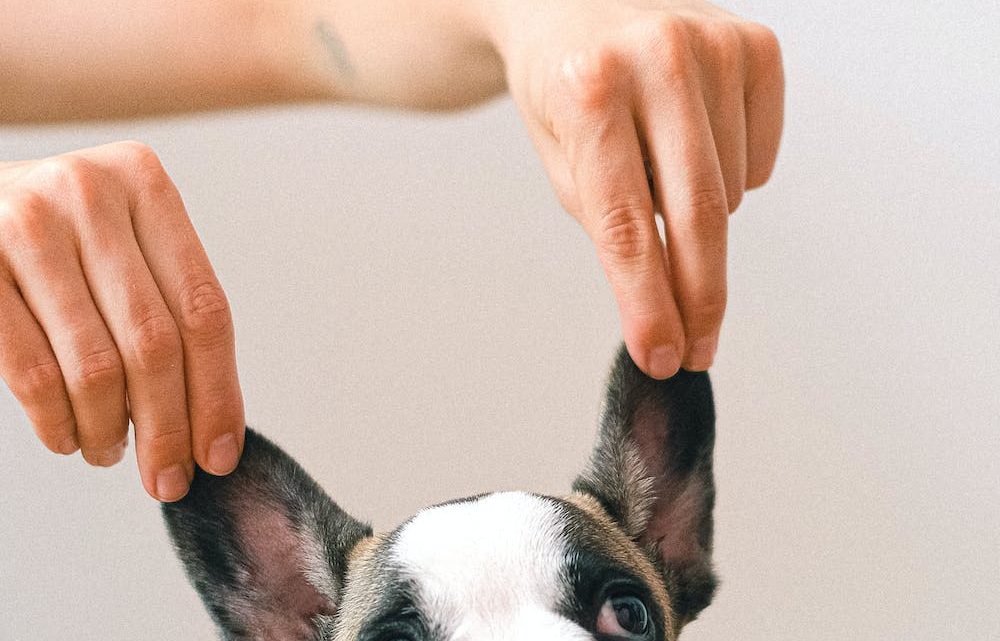Understanding Your Dog’s Body Language: What They’re Trying to Tell You
April 6, 2023Dogs are known for their ability to communicate with humans, but much of their communication is nonverbal. Understanding your dog’s body language can help you better understand their emotions and needs, and strengthen the bond between you and your furry friend. In this article, we’ll explore the most common forms of canine body language and what they mean.
- Tail Wagging Tail wagging is a classic sign of happiness in dogs, but it’s not always a straightforward gesture. The speed and direction of the wag, as well as the position of the tail, can all convey different meanings. For example, a dog with a high, stiff tail wag may be feeling excited or tense, while a dog with a low, relaxed tail wag may be feeling content and relaxed.
- Ear Position Dogs use their ears to communicate a wide range of emotions. If a dog’s ears are perked up and facing forward, they’re likely feeling alert and interested in their surroundings. If their ears are flattened against their head, they may be feeling fearful or submissive.
- Eye Contact Eye contact is an important part of canine communication. A dog that’s staring directly at you may be trying to assert dominance, while a dog that avoids eye contact may be feeling nervous or fearful.
- Body Posture A dog’s body posture can convey a lot about their emotions. A dog that’s standing tall with their head held high is likely feeling confident and assertive, while a dog that’s crouched low to the ground with their tail tucked between their legs may be feeling fearful or submissive.
- Vocalizations Dogs use a variety of vocalizations to communicate with humans and other animals. Barking is the most common form of vocalization and can indicate a wide range of emotions, from excitement to fear. Whining or whimpering may indicate that a dog is feeling anxious or in pain.
- Licking and Nipping Dogs may use licking or nipping as a form of communication with humans or other animals. A dog that’s repeatedly licking their owner’s face may be trying to show affection, while a dog that nips at someone’s hand may be trying to communicate that they don’t want to be touched.
Understanding your dog’s body language can help you better understand their emotions and needs, and strengthen the bond between you and your furry friend. Here are some tips to help you better understand your dog’s body language:
- Observe Your Dog The first step in understanding your dog’s body language is to observe them. Pay attention to their body posture, tail wagging, ear position, and vocalizations in different situations, such as when they’re playing, meeting new people, or feeling anxious.
- Look for Patterns As you observe your dog’s body language, look for patterns in their behavior. For example, you may notice that your dog’s tail is always tucked between their legs when they’re around other dogs. This can help you understand when your dog is feeling anxious or uncomfortable in certain situations.
- Consider the Context The context of a situation can also affect your dog’s body language. For example, a dog that’s wagging their tail and jumping up and down when their owner comes home is likely feeling excited, while a dog that’s wagging their tail but also growling may be feeling conflicted or territorial.
- Learn Breed-Specific Behaviors Different dog breeds may have different body language cues. For example, a breed that’s known for being anxious, such as the Chihuahua, may have different body posture and vocalizations than a breed that’s known for being confident, such as the German Shepherd. Learning about breed-specific behaviors can help you better understand your dog’s body language.
- Seek Professional Help If you’re having trouble understanding your dog’s body language, or if you’re concerned about their behavior, it’s important to seek professional help. A veterinarian or animal behaviorist can help you better understand your dog’s body language and provide advice on how to address any behavior issues.
- Respect Your Dog’s Boundaries Finally, it’s important to respect your dog’s boundaries. Just like humans, dogs have their own personalities and preferences. If your dog is uncomfortable with a certain type of physical contact or interaction, it’s important to respect their wishes and find alternative ways to bond with them.
Understanding your dog’s body language is a key part of building a strong and healthy relationship with your furry friend. By observing your dog’s body posture, tail wagging, ear position, and vocalizations, and considering the context of a situation, you can better understand their emotions and needs. Learning about breed-specific behaviors and seeking professional help when needed, and respecting your dog’s boundaries, can also help you build a deeper bond with your furry friend. So, take the time to observe your dog’s behavior and body language, and you’ll be rewarded with a better understanding of your furry companion.
References:
- American Veterinary Medical Association (AVMA). (2019). Understanding Your Dog’s Body Language. Retrieved from https://www.avma.org/resources/pet-owners/petcare/understanding-your-dogs-body-language
- Coren, S. (2012). Do Dogs Tell Lies? Disguised Body Language of the Domestic Dog. Psychology Today. Retrieved from https://www.psychologytoday.com/us/blog/canine-corner/201206/do-dogs-tell-lies-disguised-body-language-the-domestic-dog
- Landsberg, G., Hunthausen, W., & Ackerman, L. (2018). Behavior Problems of the Dog and Cat – E-Book. Elsevier Health Sciences.
- Yin, S. (2011). How to Behave So Your Dog Behaves. TFH Publications.
- Hagen, R. (2018). Dog Body Language: 100 Ways to Read Their Signals. CompanionHouse Books.

